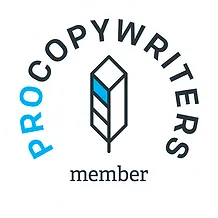Well, there’s a blog title that seems remarkably on brand…
In this unpredictable new normal where we’re all in it together but staying apart, I’m literally writing this blog post at a copywriting conference. It’s virtual, which makes it a bit like the longest webinar you’ve ever attended.
But it’s also prompting some interesting ideas, even where I don’t 100% agree with the speakers.
For a while now, I’ve been banging the drum of ‘Nobody knows anything’. I apply that to copywriters sharing career advice on social media, so-called ‘best practice’ and the tools clients try to use to assess and analyse copy. We’re all out here making educated guesses, even where we have fairly limited, industry-specific data on our side.
But, as freelance copywriters or their in-house counterparts, we all have opinions.
So I thought it’d be fun to share my conflicting thoughts as we progress through the day.
Conversion copy shouldn’t be poetic
The idea: Making something witty, emotive or evocative doesn’t influence conversions as much as we think it does.
The counterpart: What we think of as conversion copy isn’t the only thing that influences conversions.
As soon as this idea came up, I thought of the freelance copywriters I know that are out there smashing it. They all say they’re going to help your brand communicate and win business with the power of words. But the ones who get the most work are the ones with a clear, distinctive identity — and that’s all tone of voice, baby.
There’s a time and place for conversion copy and I 100% agree that it should be ruthlessly functional. But there’s an entire journey that happens around that copy — where readers are asking themselves ‘How will this impact my life on an emotional level?’, ‘What will working with this person/buying this product feel like?’ and ‘What makes you different to the other options?’.
It’s here that being poetic or digging into your sense of style pays dividends. Editing all the character out of your copy is a slippery slope.
Follow a promise with a proof point
The idea: Proof is something that should always be happening in your copy.
The counterpart: Proof comes from the bigger picture – and often the most unexpected places.
I often tell newer copywriters how everything seemed to change when a disorganised agency forgot to make me sign an NDA.
Suddenly, I was allowed to slap familiar client logos on my website. And, since then, I’ve almost entirely stopped writing proof points into my own copy. The work I’ve done speaks for itself.
It’s the same with client work. What we’re trying to do is build confidence and trust. There is nothing more important than telling someone they’re in the right place, but hitting the proof too hard stinks of desperation.
I’ve seen clients start with a series of well considered, well-written proof points, then get twenty times the impact by ditching them all and adding a single statistic like their customer satisfaction rate. Less is more.
Maybe it’s different if you spend more time working with startups and small businesses, but I’d always be inclined to put the sizzle in the spotlight. If you don’t get that right, nobody is going to get as far as needing the nitty-gritty.
Simplicity is everything
The idea: There’s nothing more important than keeping it simple.
The counterpart: Okay, but you can be hella smart at the same time.
Be witty. Be unexpected. Simple is a bit of a misnomer — what I think we’re really aiming at is elegant. There’s a metaphor somewhere about a duck’s legs, but I forget how it goes.
Great copy isn’t just simple. It’s also smart, sharp and sophisticated. The real challenge we all face is making that look effortless and super easy for the audience to read and understand.
Good enough is good enough
The idea: The law of diminishing returns means it’s better to stop when the copy is 80% good.
The counterpart: I have never agreed with anything more in my life.
But, if you’re freelance, make sure that your 80% is as good as the next guy or gal’s 90%.
